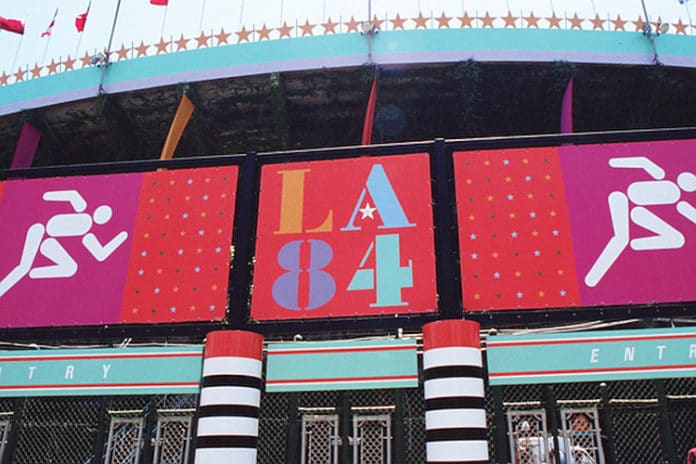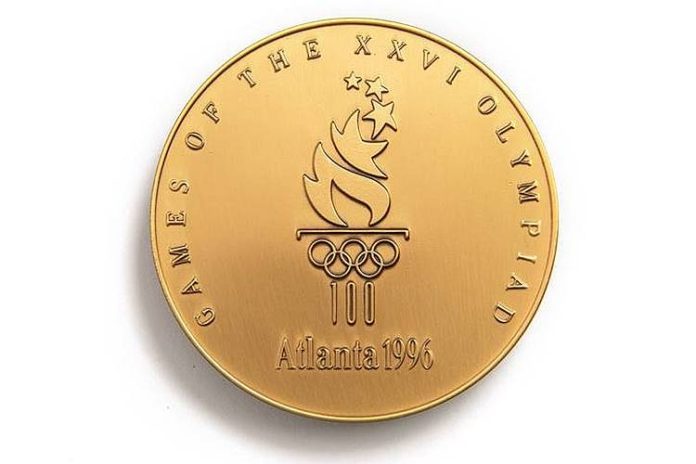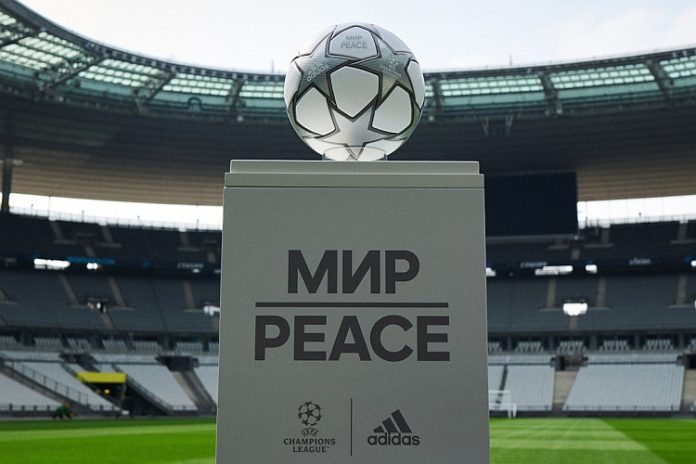● Plus: Boxing: Women’s Worlds end with awards confusion and some free gloves = Swimming: USA Swimming announces 2024 Trials dates = SCOREBOARD => Athletics: three world leads at Ibero-American Champs = Cycling: van Dijk
smashes women’s hour record! ●
News, views and noise from the non-stop, worldwide circus of Olympic sport:
≡ SPOTLIGHT ≡
The International Olympic Committee’s Olympic Studies Centre released a fascinating study last week, trying to determine the status and usage of every Olympic venue from the 1896 Athens Games through to the 2018 PyeongChang Winter Games.
The results showed that 923 different venues have been employed for the various Games, with 89% being permanent sites (817) and 11% as temporary (106). Of the 817 permanent sites, 85% are still in use (692), with 15% (124) not in use and information not available on one, the Royal Australian Air Force Station in Melbourne. The report notes:
“Of the 15 per cent of permanent venues not in use (124 venues), the majority (88 venues) were unbuilt or demolished for a variety of reasons. Some had reached the end of their life, some were destroyed during war periods or in accidents, while others were replaced by new urban development projects or were removed for lack of a business model. The remaining venues not in use are closed or abandoned (36 venues).”
So, how did each Games do? Let’s take a look at the Olympic Games to start – saving the Winter Games for later – with the percentage of existing and new sites (not temporary) and the percentage of those still in use:
● 1896 Athens: Existing & new: 87% ~ Still in use: 86%
● 1900 Paris: Existing & new: 80% ~ Still in use: 67%
● 1904 St. Louis: Existing & new: 83% ~ Still in use: 100%
● 1908 London: Existing & new: 93% ~ Still in use: 62%
● 1912 Stockholm: Existing & new: 75% ~ Still in use: 67%
● 1920 Antwerp: Existing & new: 89% ~ Still in use: 59%
● 1924 Paris: Existing & new: 86% ~ Still in use: 63%
● 1928 Amsterdam: Existing & new: 67% ~ Still in use: 50%
● 1932 Los Angeles: Existing & new: 71% ~ Still in use: 90%
● 1936 Berlin: Existing & new: 95% ~ Still in use: 70%
● 1948 London: Existing & new: 97% ~ Still in use: 68%
● 1952 Helsinki: Existing & new: 95% ~ Still in use: 89%
● 1956 Melbourne/Stockholm: Existing & new: 95% ~ Still in use: 72%
● 1960 Rome: Existing & new: 64% ~ Still in use: 81%
● 1964 Tokyo: Existing & new: 84% ~ Still in use: 92%
● 1968 Mexico City: Existing & new: 62% ~ Still in use: 92%
● 1972 Munich: Existing & new: 88% ~ Still in use: 79%
● 1976 Montreal: Existing & new: 88% ~ Still in use: 96%
● 1980 Moscow: Existing & new: 88% ~ Still in use: 78%
● 1984 Los Angeles: Existing & new: 89% ~ Still in use: 92%
● 1988 Seoul: Existing & new: 90% ~ Still in use: 93%
● 1992 Barcelona: Existing & new: 90% ~ Still in use: 94%
● 1996 Atlanta: Existing & new: 90% ~ Still in use: 85%
● 2000 Sydney: Existing & new: 90% ~ Still in use: 96%
● 2004 Athens: Existing & new: 94% ~ Still in use: 75%
● 2008 Beijing: Existing & new: 77% ~ Still in use: 97%
● 2012 London: Existing & new: 77% ~ Still in use: 95%
● 2016 Rio: Existing & new: 80% ~ Still in use: 93%
Who were the construction kings? The Games with the highest percentages of new venues:
1. 62% ~ Athens 2004 (20)
2. 61% ~ Sydney 2000 (18)
3. 56% ~ Rome 1960 (11)
3. 56% ~ Tokyo 1964 (16)
5. 45% ~ Beijing 2008 (18)
6. 44% ~ Barcelona 1992 (16)
7. 43% ~ Seoul 1988 (13)
8. 40% ~ Rio 2016 (13)
9. 38% ~ Berlin 1936 (7)
9. 38% ~ Mexico City 1968 (8)
Athens for 2004 built 20 new sites according to the study, easily the highest total, with Sydney 2000 and Beijing 2008 following with 18 each.
The recycling champion for venues, not surprisingly, was the 1948 Games in London, still devastated by World War II:
1. 97% ~ London 1948 (28)
2. 86% ~ London 1908 (12)
3. 79% ~ Antwerp 1920 (15)
4. 77% ~ Los Angeles 1984 (20)
5. 76% ~ Paris 1924 (16)
6. 73% ~ Paris 1900 (11)
7. 69% ~ Melbourne/Stockholm 1956 (11)
8. 67% ~ St. Louis 1904 (4)
9. 65% ~ Mexico City 1968 (15)
10. 63% ~ Montreal 1976 (15)
(Some of these percentages do not correspond to those shown in the study, which were incorrect for several Games; the above figures are in line with the written description of each Games in the study.)
In terms of the four Games held in the U.S.:
● 1904 St. Louis: six venues, four of which were existing, one new and one temporary.
● 1932 Los Angeles: 13 total venues, eight existing, two new and three temporary sites. Two of the sites – the Los Angeles Memorial Coliseum and the Rose Bowl – were used in 1932, 1984 and are planned for use in 2028!
● 1984 Los Angeles: The report states 26 sites were used, with 20 existing, three new and three temporary sites. The new construction included the McDonald’s Olympic Swim Stadium at USC (still in use), the 7-11 Olympic Velodrome at California State University, Dominguez Hills (now repurposed as the Dignity Health Sports Center) and the Olympic Shooting Range in Chino (still in use).
The only sites “not in use” today are the velodrome and the Los Angeles Memorial Sports Arena, which is now the Banc of California Stadium, both of which were torn down to make room for larger sports facilities!
● 1996 Atlanta: 28 sites used, 17 existing, nine new and two temporary. Two major stadia, the Atlanta-Fulton County Stadium and the Georgia Dome, have both been demolished, as the Braves and Falcons have moved to new venues.
Only one of the new facilities is not in use today; the Stone Mountain Park Tennis Center fell into disrepair and was closed in 2007 and demolished in 2018.
We’ll check out the Winter Games rankings in the future.
≡ THE 5-RING CIRCUS ≡
● Boxing ● Sometimes the International Boxing Association appears to be confused.
In a celebratory news release after the close of the Women’s World Championships in Istanbul (TUR), it was noted:
“The International Technical Officials named the Turkish boxer and defending World champion Busenaz Surmeneli the best boxer of the Championships after her winning performance in the 66kg weight class.”
Four paragraphs later, a list of winners of the “Outstanding Women’s Boxing Awards” included Ireland’s Katie Taylor, the 2012 Olympic Lightweight gold medalist and a five-time World Champion between 2006-14. How does that relate to the 2022 Worlds?
In any case, there were some extra prizes handed out at the post-event banquet, as “the IBA President gifted a pair of white boxing gloves to all the medallists from the competition, to mark their success at the IBA Women’s World Boxing Championships.”
● Modern Pentathlon ● The tug-of-war between the Union Internationale de Pentathlon Moderne (UIPM) and many of its athletes is continuing to rise in awareness, with Germany’s celebrated ARD muckraker, Hajo Seppelt, commenting on the 22 May edition of his popular “SportSchau” broadcast.
In English (translation by computer), Seppelt and two colleagues reported:
“[President Klaus] Schormann‘s small association, which was used to doing business away from the great attention, is now confronted with a long list of allegations: from an autocratic management style to systematic violations of its own rules from the election and ethics code to buying election votes.
“It’s getting tight: In one case, the World Court of Arbitration for Sport is now dealing with whether Klaus Schormann [GER] and his board of directors have exceeded the competences. …
“Since [the Tokyo Games], it has been shown that Schormann’s small pentathlon association can hardly cope with the big spotlight. It is not only dawning on the athletes that their federation only gives itself a democratic face and that its president, who likes to be jovial, is actually more of a kind of Charles Bronson of the pentathlon. Motto: I am the law.
“Last fall, Schormann suddenly made the decision that made him the enemy of many of his own athletes: he decided with his board of directors to exchange equestrian sport for another fifth discipline. Earlier this month, he announced that it would be the Obstacle Course, a cross between army drill camp and 1970s Games Without Borders.
“Was the group of experts that was brought together to select the new fifth discipline just a cover? As early as 2015, Schormann boasted: ‘I’ve always been able to assert myself quite well in my executive for 23 years, that people followed what I came up with, because all things grew in my head.’”
The story states that the IOC directed the UIPM to remove riding as a discipline, but has also removed the sport from the Los Angeles 2028 sports program pending a replacement and a plan for cutting costs and getting greater public attention.
Maybe this is one way to do it?
● Swimming ● USA Swimming announced that the 2024 U.S. Olympic Trials in Indianapolis will take place from 15-23 June, at the Lucas Oil Stadium.
It also posted he qualifying standards for the Trials, with men’s events about 1.0% faster on average and women’s events averaging about 0.8% faster.
≡ SCOREBOARD ≡
● Athletics ● More world-leading marks over the weekend, all at the Ibero-American Championships in La Nucia, Spain.
In the men’s triple jump, Cuba’s Lazaro Martinez, the 2022 World Indoor Champion, reached 17.30 m (56-9 1/2) for the best outdoor jump in the world this year.
Two women’s outdoor world leads were recorded, with Dominican star Marileidy Paulino winning the 400 m in 49.49, and Cuba’s Leyanis Perez winning the triple jump at 14.58 m (47-10).
● Cycling ● Pretty impressive ride by Dutch star Ellen van Dijk – the 2021 World Time Trial Champion – at the Tissot Velodrome in Grenchen (SUI), setting a women’s world record for the hour ride, covering 49.254 km or 30.60 miles!
She smashed the old mark of 48.405 km (30.08 miles) by Great Britain’s Joscelin Lowden from September 2021.
You can receive our exclusive TSX Report by e-mail by clicking here. You can also refer a friend by clicking here, and can donate here to keep this site going.
For our updated, 620-event International Sports Calendar for 2022 and beyond, by date and by sport, click here!




























